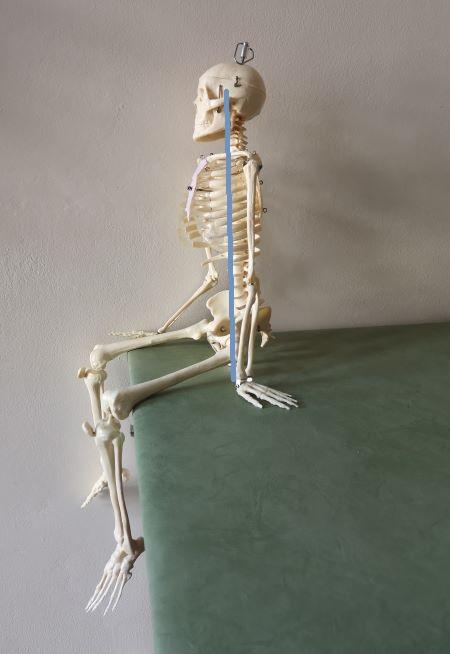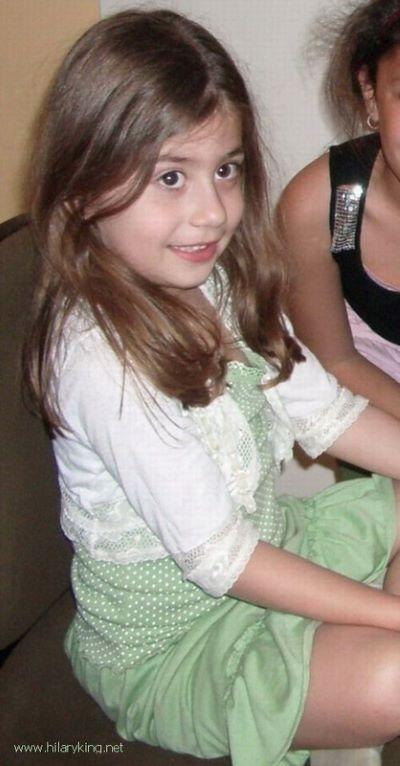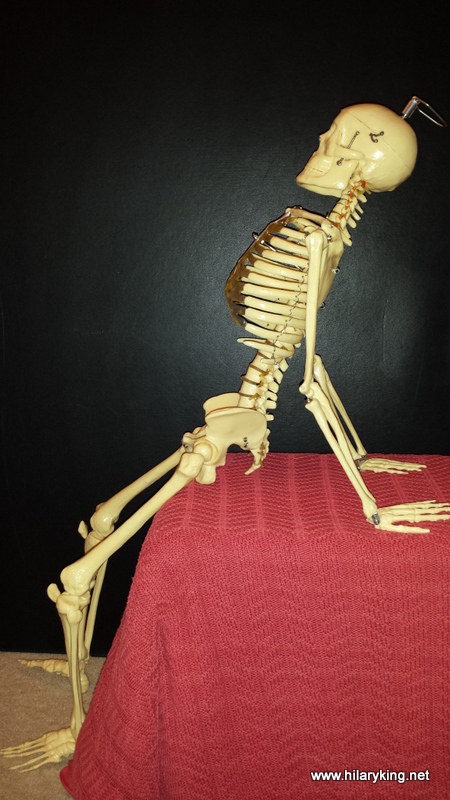Are You Sitting Comfortably? No?
I had some fun setting up and taking these photos of Skelly, who usually hangs on a stand but I wanted him to sit. Interestingly, the easiest way for me to set him up was balancing on the sitting bones (ischial tuberosities) just the way our bodies are designed to sit. When Skelly was put in other positions, he just overbalanced. OK he’s only a plastic skeleton without muscles but he shows us our bony structure and the way our bodies are designed to work. Sitting with poise is quite natural and the Alexander Technique can help you do this.

Balancing on the Sitting Bones
Your head is heavy and needs support
Do you know how much your head weighs? An average adult human head weighs about 4.5 kg – 5 kg (9.14oz – 11lbs). It is heavy and it needs proper support!
See how the skull is supported through the body. You can create an imaginary line from the skeleton’s ear (near the hinge of the jaw), down to the shoulder and down to the sitting bones. In this way the large weight of the head is balanced centrally and is supported, because it gets transferred through the spine and skeleton, right down into the sit bones. You can see the chunky rockers of the sit bones at the base of Skelly’s pelvis in the photo below. These are planted firmly on the surface so they can take the weight of the skeleton above. Because of the angle I had to take the photo, he does not appear to be aligned with his shoulders but from the side view, he was.
Sitting bones are curved and act like rockers
I thought I would also try getting Skelly to lean backwards. He cannot slump and collapse as real people do because he is too rigid but I did eventually get him to balance briefly. But his arms are bent very oddly! This image shows the sitting bones as rockers and also clearly shows the tiny bone of the Coccyx at the tail end of the spine. This is not designed to take any weight but is often forced to do so because of the way the pelvis has tilted. This can happen when someone slumps in a chair, so the Coccyx is put under too much pressure and can be damaged, along with some of the vertebrae and discs.
In this position the heavy skull is left unsupported. So a real person would probably drop the head and neck forwards to see out in front of them, rather than stare at the ceiling! This forces the neck and back muscles to overwork, in order to maintain some sort of balance – and their breathing will be restricted. No wonder people get problems such as neck and lower back pain when they sit off balance for long periods of time.
This is a good example of how our ‘use‘ or ‘mis-use‘ affects how well our body is able to function.
Balancing on our sitting bones is a comfortable way to sit
Sitting with poise whilst balancing on our sit bones, allows our bodies to function more efficiently. One of the great things about Alexander work is that when we let go of unhelpful ways of doing things and learn a more balanced way of using our bodies, we find we can sit more comfortably,
The pupil quoted below was very grateful for her AT lessons but her sad words illustrate how being forced to ‘sit up straight’ as a child is usually unhelpful. At least she had the option of learning the AT and rediscovering the joy of sitting comfortably as an adult:
“I wish I’d been told about my sitting bones as a child instead of being hit and told to ‘sit up straight’. It’s so much more comfortable!”
“I also found sitting on a stool for quite a long time without a back support in the way Hilary taught us – balancing on my sitting bones, finding the exact right curve in my spine that did not ache after a while – was unbelievably comfortable”
Why do we lose this easy poise?
The child below was photographed as she played with her friends and fortunately, she had not been ordered to sit up straight! She was not posing for the camera but displays a lively, natural balance that she’s unconsciously using. Children can very often sit like this for long periods of time without strain but unfortunately many tend to lose this easy poise as they grow older.
Why does this happen? Well, children get bored or upset and express this in their bodies, by tensing and crumpling into themselves. Or they can sit rigidly upright, trying to ‘sit up straight’. This instruction often ends up with people trying to ‘get it right’, sitting with a tight, over-arched back that is uncomfortable and can eventually become painful.
Sometimes, the furniture children have to use may be unsuitable, like the backward sloping chairs that are often used in schools, which many AT teachers are trying to ban. Children may grow suddenly, so they don’t quite know how to use their bodies because they can’t work out how big they are, where they are in space. They can spend hours slumped in front of the TV or with a phone…. there can be many reasons for developing habits that disturb our balance and poise!

Back pain whilst playing the piano
A young woman came for AT lessons because she had a lot of pain in her upper back when she played the piano.
During lessons it became clear that she had a habit of over-tensing her back muscles as she lifted her arms up and pretended to use a keyboard. She wasn’t being supported because her back was arching and the tension slightly lifted her sitting bones off the chair. This tension was there despite the fact that her playing was for her ‘relaxation’.
The pain was making it less enjoyable. Interestingly, her back was also much tighter when she just thought of playing the piano. This tension was greater compared to when she thought of using a computer, even though movements were so similar. This beautifully illustrates how our thoughts and attitudes influence the way we use our bodies.
Sitting with poise eased the tension in her back
This student happily reported that her back pain was much less, after having just a couple of lessons. This was great to hear and it was clear that she had begun to take AT work on board. She had been observing herself as she played the piano and had regularly used the lying down procedure, which has helped her begin to change her habits really quickly. Connecting with her sit bones allowed her to balance in a more poised manner. This allowed her arms to move more freely and eased the tension in her back, reducing her pain.
If we can all sit and work at desks and pianos with the easy, fluid balance that the child displays in the photo, we’ll all be a lot happier in our bodies!
How can we sit with easy poise like this child?
In Alexander lessons, the teacher helps you to consciously find an inner balance in yourself, so that you can sit and move around freely and easily, like this child. Recognising your unhelpful habit patterns can help you let go them. Then you can return to, or create, an easier poise that you can enjoy during daily activities such as eating a meal, computing or playing the piano.
Want to find out how the Alexander Technique can help you to sit with poise, plus walk and move around more comfortably? Individual lessons, online lessons and small group workshops are available on a regular basis.
